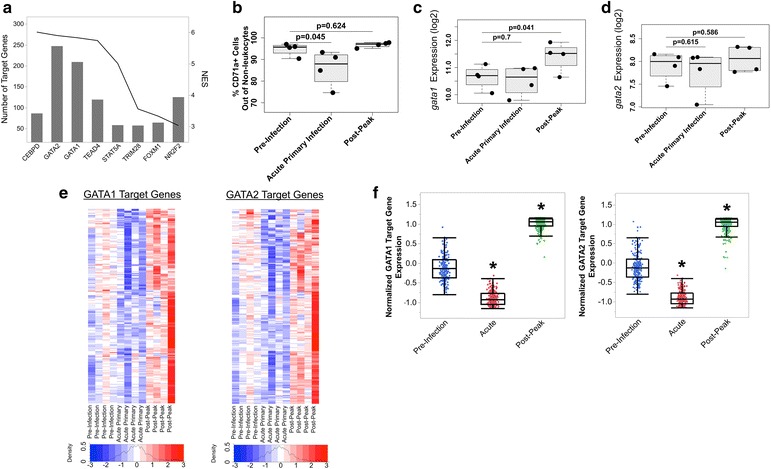Fig. 6.

Disruption of GATA1 and GATA2 in erythroid progenitor cells may contribute to the decrease in erythroid progenitors and insufficient erythropoietic output during acute malaria. a Transcription factor analysis identified eight transcription factors (NES > 3) associated with the cluster of genes positively correlated with reticulocyte levels. The line plot indicates the NES score, while the bar plot indicates the number of genes in the set containing a binding site for each transcription factor. b Frequency of erythroid progenitors in the bone marrow during different infection periods as determined by flow cytometry. There is a small but statistically significant decrease at acute primary infection. c, d Transcriptional expression levels of GATA1 and GATA2 in BM. Expression of GATA1 was upregulated at post-peak, but not at acute primary infection, while GATA2 levels were not significantly changed. e Heatmap of gene expression levels of the GATA1 and GATA2 transcriptional regulatory network; samples are in chronological order, while genes are hierarchically clustered. Most pathway members were downregulated at acute primary infection and upregulated at the post-peak infection point. f Gene expression of GATA1/2 targets was downregulated at acute primary and upregulated at post-peak compared to pre-infection. Gene measurements were averaged across animals for each infection point, and paired t tests were used to assess statistical significance (Asterisk: significant at p < 0.01)
